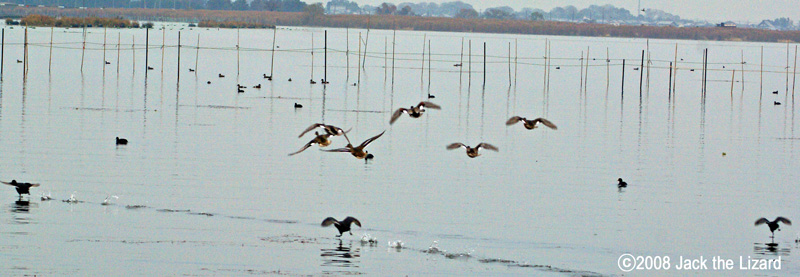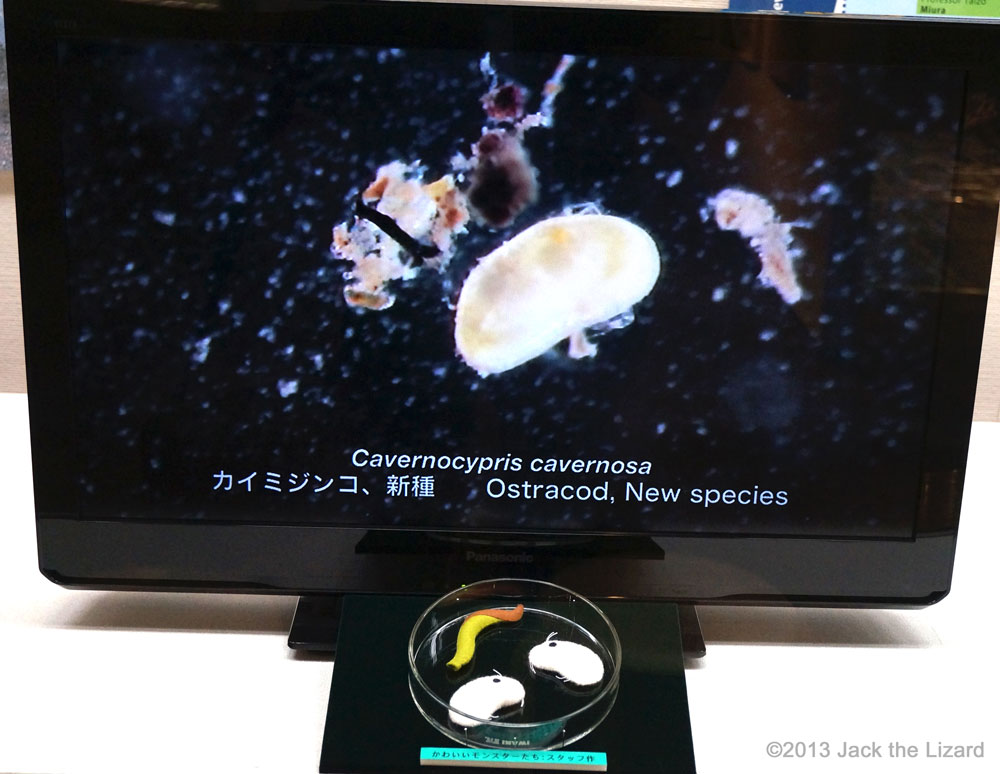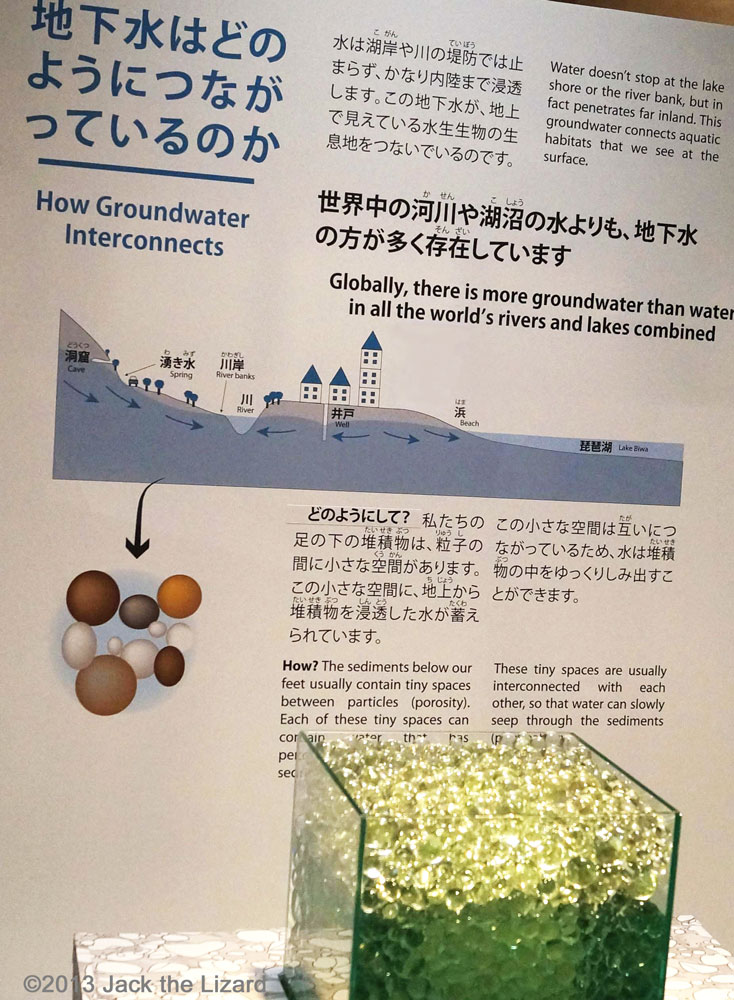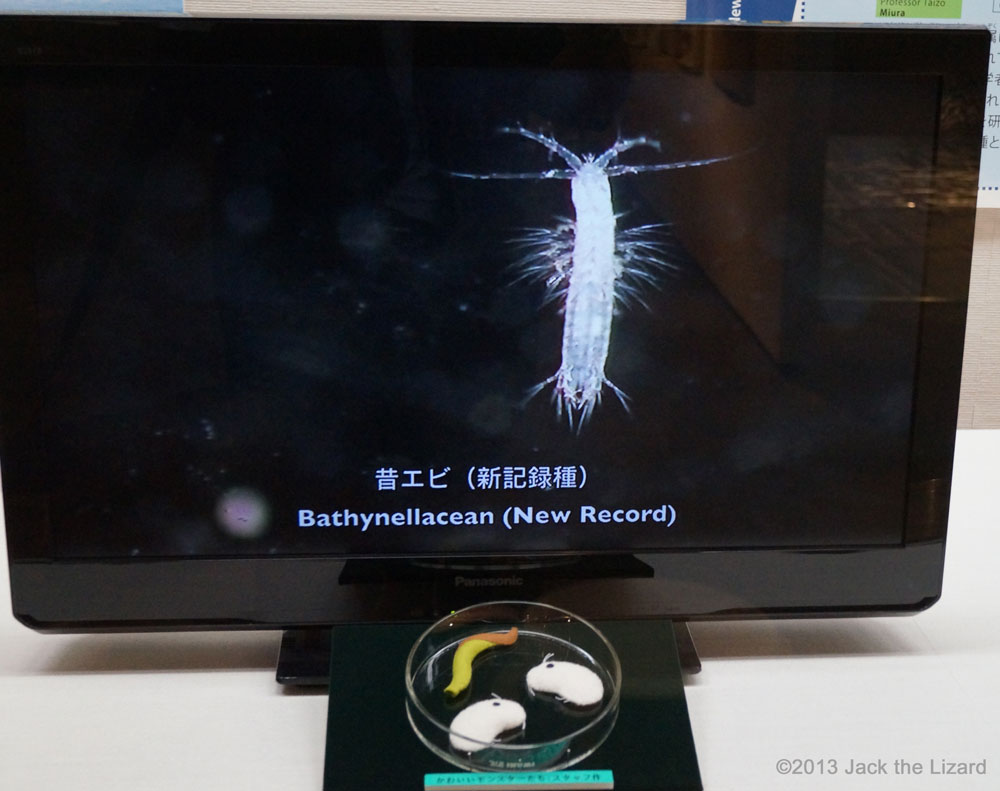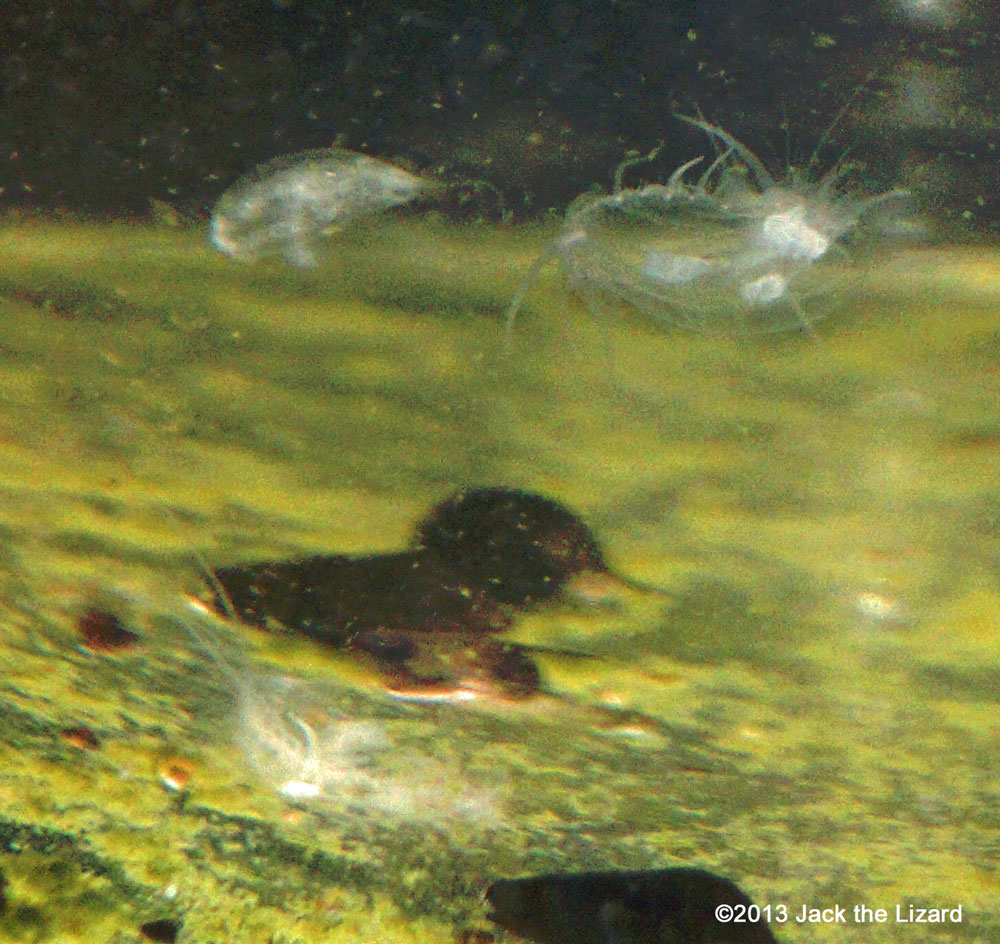
|
|
|
|
| Tiny creatures in water (Feb. 26, '13) | |
| Microscopic World (Jul. 16, '08) | |
| Exploring Lake Biwa Museum (Dec. 12, '07) |
February 26, 2013
Tiny creatures in water
|
Ostracods are one of the protagonists in this exhibition. Ostracods, sometimes called seed shrimp, are crustaceans, which cover their body with hard shells like shrimps and crabs. The habitats are in water both fresh and salt. They are not large animals their size is only about 0.3 to 5 mm (0.01 to 0.2 inches). The structure of their body is similar to bivalve that has two parts of hard shells with hinge protecting soft body. Fascinatedly ostracods are in variety of colors in green, yellow, purple and so on. Since they have evolved well to survive they have longer history than dinosaurs. The fossils of marine ostracods were found in Ordovician (485.4 to 443.4 million years ago) strata. The oldest fossil of the freshwater ostracod was found in Carboniferous (358.9 to 298.9 million years ago) strata. They have thrived all over the world since then. Today about 8,000 different kinds of living ostracods are recognized and 33,000 including fossilized kinds. 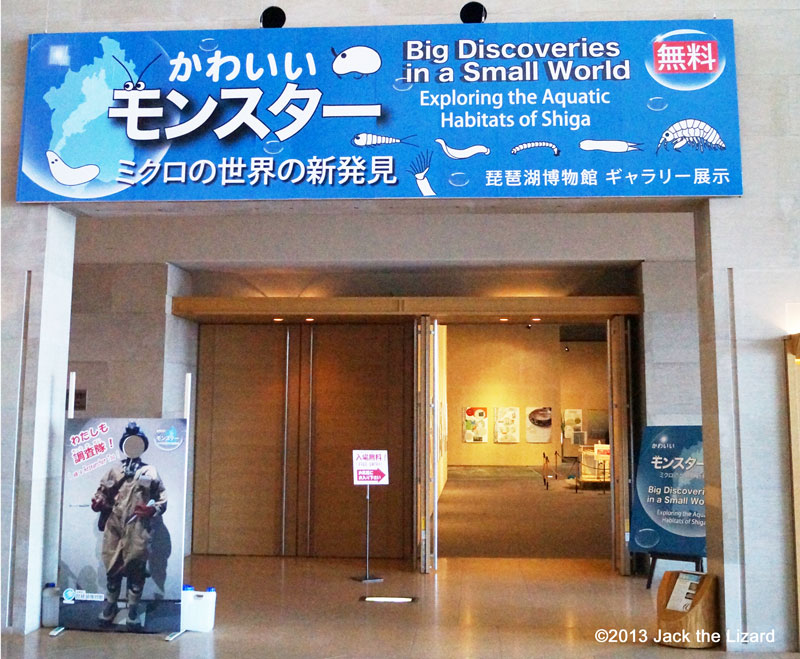
Exhibition was held from
December 22, 2012 to March 10, 2013. |
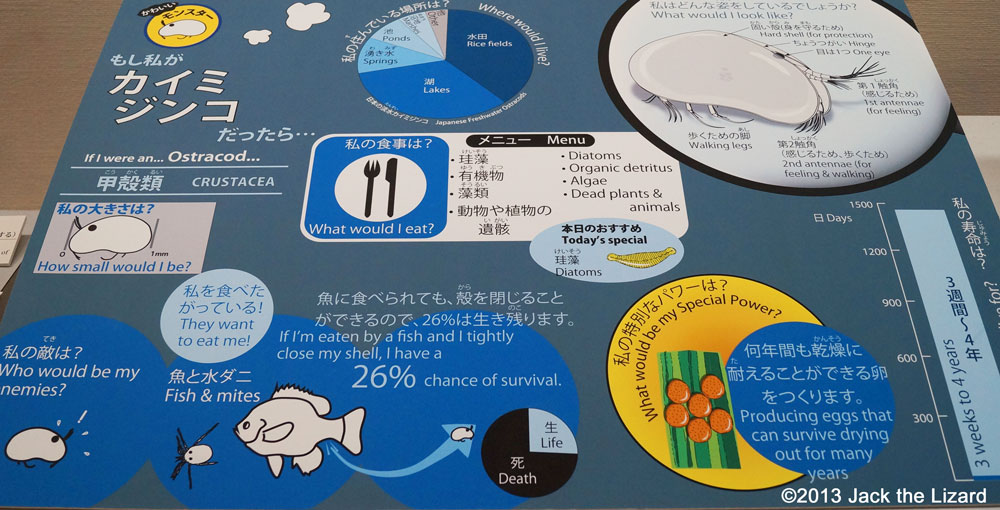
Amphipods and Copepods were found.
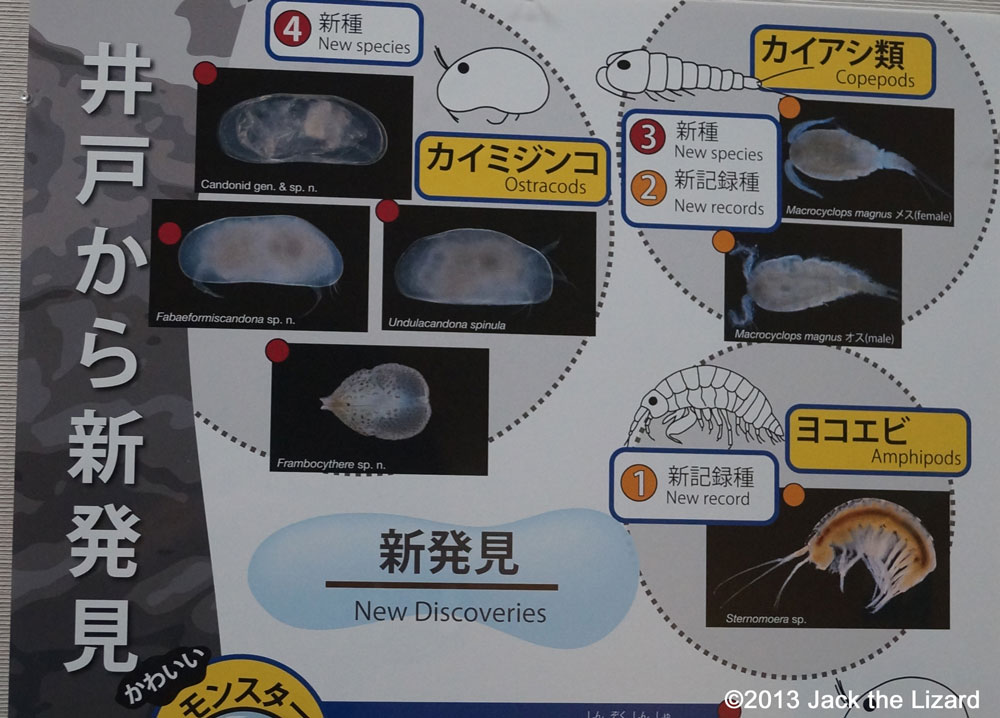
|
Take a look at itDr. Robin James Smith, Chief Curator at the Lake Biwa Museum, is one of the organizers of this special exhibition “Big Discoveries in a Small World - Exploring the Aquatic Habitats of Shiga” (December 22, 2012 to March 10, 2013). Dr. Smith who is a taxonomist from UK found that Lake Biwa and its surrounding areas are like treasure houses of creatures. “I’ve found 40 kinds of ostracods and astonishingly 16 of them are the new species, but the ostracods are just parts of our discovery. I’ve also found 152 of new records and 50 of new species from the previous research. We are surrounded by many of unrecognized animals”, Dr. James emphasized that the discovery of the unknown creatures is always possible. It takes a long procedure to confirm academically that the discovered species is actually “new species”. To make sure that the same species has never recorded before, many of reference books, dissertations and specimens need to be reviewed. It is also necessary to consult other researchers and scientists for their opinions and analyze the DNA. Of course the scientist needs to have keen sense and well trained eyes to identify the small difference of body structure and colors. |
It’s still important to observe them with your own eyes.
|
Biological researches have been carried on since more than 180 years ago at Lake Biwa and its surroundings. The new discoveries are not only large fish like sweetfish, lecoglossus altivelis, or Crucian carps, Carassius, but also microscopic organisms that their body length is just a few millimeters. |
|
Since the research team extended the study area into environments never have been checked before such as rice fields, water wells, springwater, subterranean rivers, and so on the team discovered so many new species and records. In addition to the mad and sand on the bottom of water, the organs stuck to water plants and weeds were also collected to be checked and examined. |
There are only a few specialists of some particular species of microorganism in Japan. The number of references is limited. There are so many different kinds of microorganisms in the area, so the studies to identify every single of them are very hard even for the specialists. While DNA testing has been common due to the developed molecular biology, the traditional research to identify the species from its body structure and biological characters has not been common practice any more. It is faster and more accurate to check the DNA through the computer data base, but it does not explain everything yet. As an example of that, Dr. Smith points out the difference of underground ostracods and lake ostracods. “Ostracods has a protuberance, called caudal appendage. Ostracods range in flowing water have well developed caudal appendage, while the ostracods in lakes have small ones. It can be thought that the developed caudal appendage is useful and necessary for them to find foods in the sand particles and find a mate in the stream easily,” explains Dr. Smith. He says it’s very important to understand the biology of new species from its body structure as well as the discovery itself. |
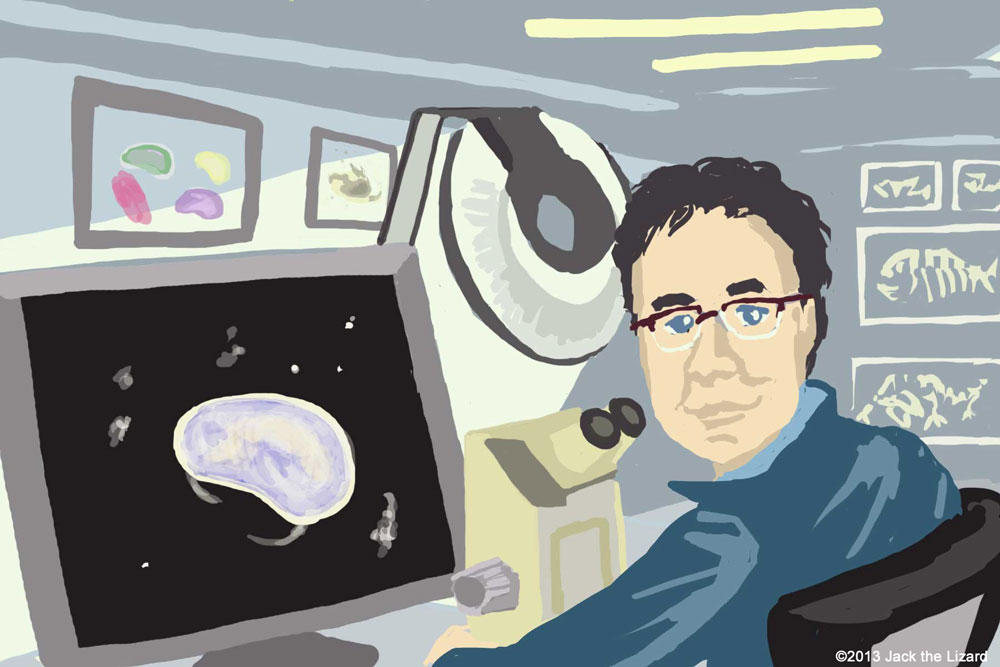
Dr. Smith. The fascination of variety of figures and colors of ostracods lead him to keep researching on them.
|
Searching in caves
Dr. Mark. J. Grygier is the researcher of crustacean such as the tadpole shrimp or the Fairy shrimp in the wetland like rice fields. In a meantime, he loves Bipalium. Bipalium is in the order of Tricladida in the class of Turbellaria. One of the famous creatures from the same order is the Planaria, which can be cut into half and each parts can regenerate into the complete bodies. The reason why Dr. Grygier is so interested in Bipalium is the fact that it is very rare to find and observe them in the U.S., his home country. In contrast the climate in Japan is wet where Bipalium can range over easily. “It is really amazing that I can find them everywhere. Some of them are larger than a metre,” said Dr. Grygier. Bipalium is not actually the creature he really studies about but all the curiosities towards the living creature around us are the basic attitude and philosophy of his scientific research. The land of the area around Lake Biwa is formed with limestone that forms many caves. Dr. Grygier explored deep inside those caves. He had to be very careful and patient to walk safely and find creatures at the same time on the slimy surface in the dark caves for a long period of time. Finally he found a new species of Copepod from one of the cave in Taga-chou, east side of Lake Biwa. |
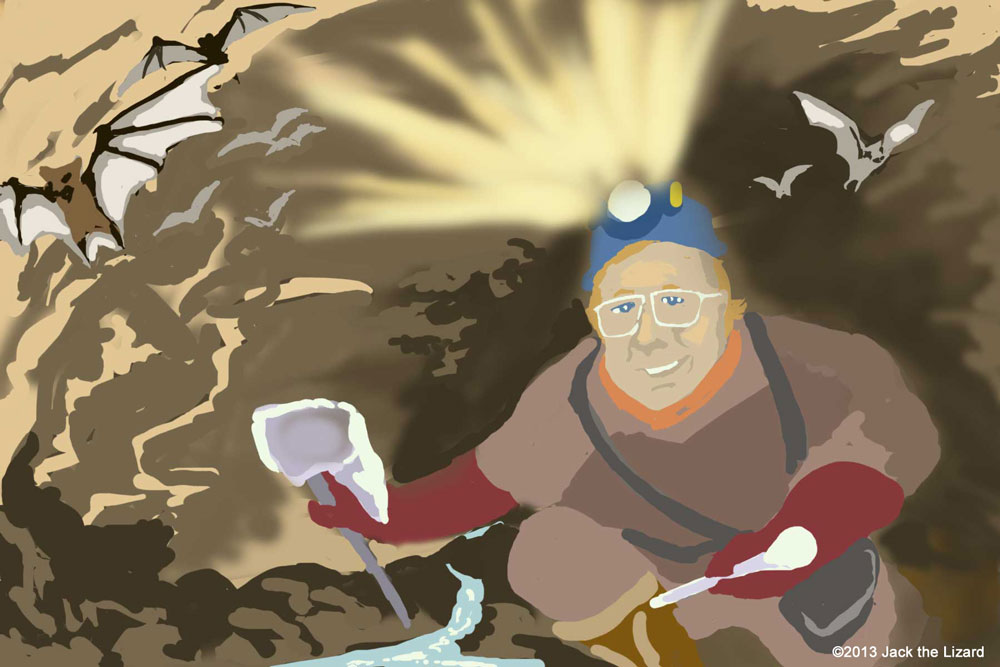
Dr. Grygier willingly explores variety of natural environment to find new creatures.
|
We do not know about so many things yet.
It is not only about the new species. Rare species like Bathynellacean is also very important. Although they were found from water well and river bed during this research, there is no specialist of Bathynellacean in Japan. Only one specialist in East Asia lives in Korea. So the biology of the bathynellacean is still unknown and not studied well yet. Dr. Grygier wants to scrutinize on their biology before they disappear because of the loss of habitats with the urbanisation and pollution. The situation of the Ostracod is no difference. According to Dr. Smith, even though we found many species of ostracods, we still do not know well on the population and the biology of the Ostracod. Simply there are still too many new species to find and put the name on it. Some ostracods can be the indicator of the environmental change because they are very sensitive to the level of oxygen density in the water. Knowing about ostracods is that knowing about our natural environment itself. |
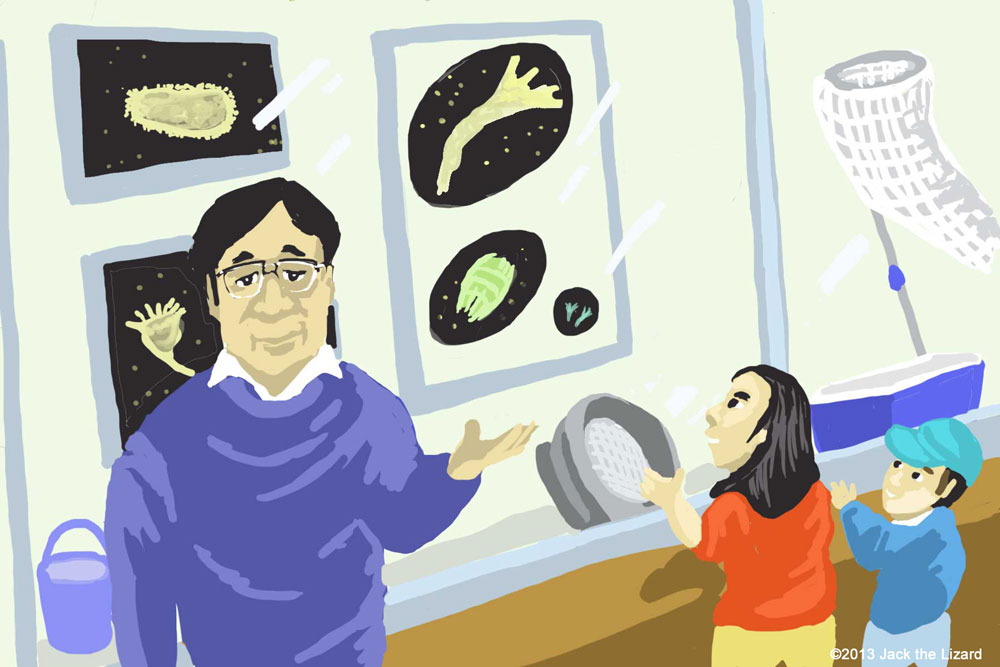
Dr. Kusuoka is the specialist of ciliate such as paramecium and stentor. Most of them are smaller than 1mm, but their body structures and movement are very interesting under a microscope.
|
Illusive Jellyfish
Lake Biwa Museum rears very unique Freshwater Jellyfish, Craspedacusta sowerbii. The diameter is about 3cm. This jellyfish is originally from China, but they range all over Japan, from Hokkaido to Okinawa. The ideal habitat is wetland such as lake and pond shore. Although those bodies of waters can be found in Japan easily it is not easy to find them because they do not emerge at the same places in the same seasons. Interestingly they reproduce themselves by both ways sexual reproduction and asexual reproduction. When they reproduce their offspring without mating they go through the stage called polyp to be a jellyfish. For a while polyp stick on the bottom of the water like sea anemone and eventually develop buds and create colony, then become jerryfish. Amazingly one pond has the same sex of the jerryfish in Japan, north America and Europe while in China the both sex are found in the same pond. It is difficult to rear them for long term. Let’s go to the Lake Biwa Museum while you still have a chance to watch them closely. |
July 16, 2008
Microscopic World
Lake Biwa Museum opens workshop for students. The students go out to the lake just out side of the museum to collect planktons. They are hardly seen by eyes, so students use the electron microscopes to watch and draw each of them in the laboratory. Several sample photos of planktons are prepared by the museum curators. So students can recognize what they are actually watching through the microscopes. At the end, the museum curators explain each of phytoplankton and zooplanktons.
Today, many of the students collected anabaena and microcystis. They are genus of filamentous cyanobacteria. The cities and villages have been rapidly developped and nutritious drain flow into rivers and lakes. That propagates cyanobacteria and float surface of the lake which looks like dropping green ink on water. The cyanobacteria produce neurotoxins, which is toxic and harmful to environment, plants and animals.
The plankton shown in the TV monitor is Noro (Leptodora kindtii), a kind of water flea. It looks like a tiny shrimp, which has single compound eye.

The curator Taisuke Otsuka is the specialist of phytoplankton. Phytoplankton doesn’t move by itself, so it is not easy for students to find. He shows the features of the planktons and explains its' ecology.
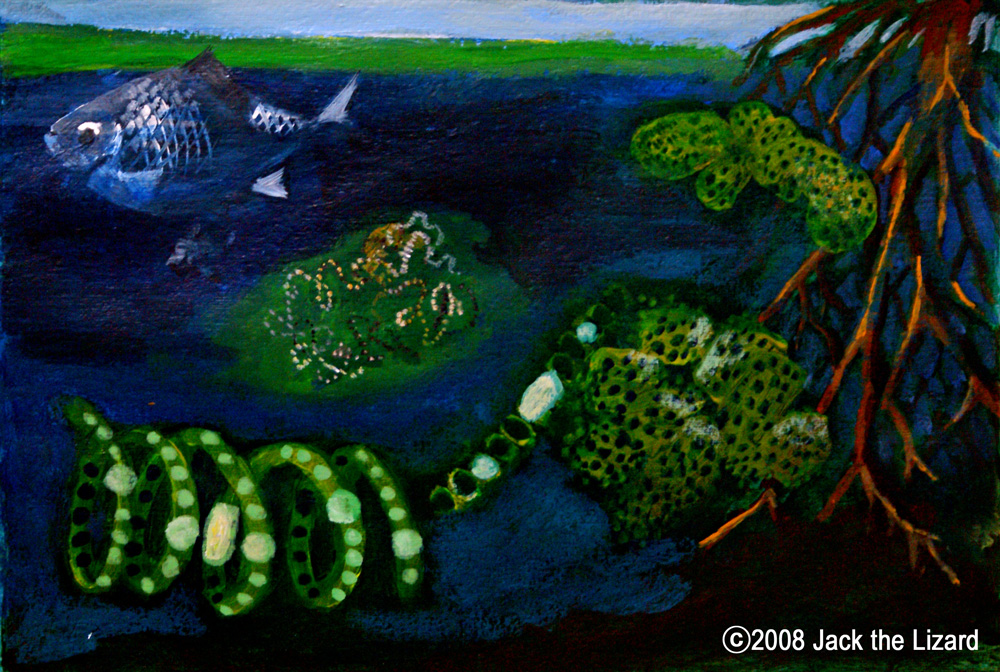
What is Plankton anyway?
Plankton is defined as a creature which has limited ability to move by itself or just float in the water.
So the 1/1000 millimetre long Picoplankton is a plankton, and 2 meters long Megaplankton such as jellyfish is a plankton as well.
Is the Slipper Animalcule male or female?
It is said that there are more than several thousands different kinds of plankton only in Lake Biwa. However, only about 800 of those have been listed up. Plankton can be normally divided in two groups. Phytoplankton and Zooplankton. To get nutrition, phytoplankton photosynthesizes and zooplankton feeds on other plankton. Each of them has different size in different colour.
One is in pink to protect itself from sunshine, and another is in red dyed by food. Some stick sand grains to create nest, and another has mucus around its body to protect from predator.
Paramecium, Slipper Animalcule has 3 genders A, B, and C!! unlike most of the beings on the earth which have two genders, male and female.
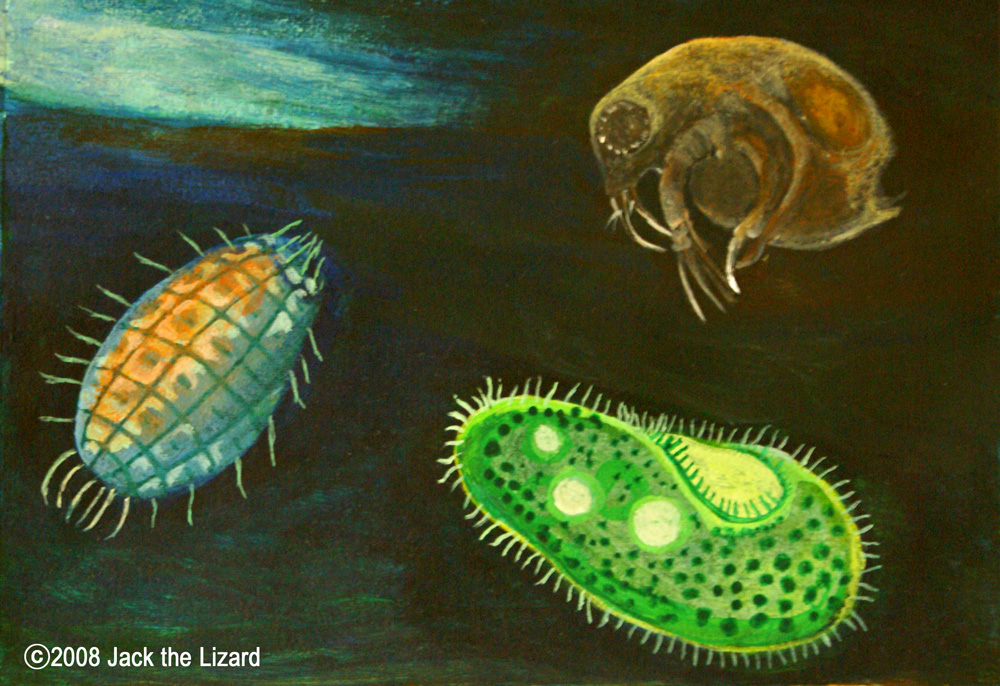
Levicoleps biwae eats dead water fleas. It is like hyena in lake.
Super UnicellularIt is thought that life on earth began 3 billion years ago. It is still unknown what exactly the first being emerged was. It is commonly understood that the first being produced its offspring which produced its' offspring, and gradually increased variation between organisms, then each of them branched out to millions of species. There are many different kinds of microscopic organisms which evolved in the different way from human, mammalians, fowl, fish and so on. They are unicellular, which consist of only one cell. Their sensory system is not divided into mouth, nose, eye, ear, and so on. But unicellular has ability to sense. One proceeds towards light, another recognizes smell and another feels magnetism. "Unicellular is like a computer chip. One cell has all functions of the sensory systems. It is likely to be misunderstood that unicellular have fewer abilities, but that is wrong", said Yasushi Kusuoka, the Senior Research Scientist. |
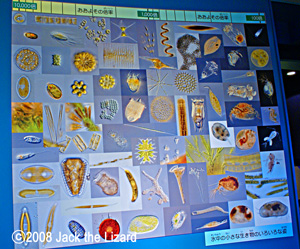
Gallery C exhibits the culture and life style of the people around the Lake Biwa. The plankton zone in the gallery was expanded in March 2008 after renovation. |
Actually some unicellular plankton has amazing ability. For example, one amoeba never die. If the cell is damaged or lost part of it, it can fix the damage by itself. It reproduces via mitosis and cytokinesis. When it becomes old, the amoeba can be merged with younger one to be a younger unicellular. Paramecium bursaria, a kind of slipper animalcule, can survive only with sun shine. Paramecium bursaria has symbiotic algae, chlorella. Paramecium bursaria feeds on organic substance which is produced by chlorella via photosynthesis. The chlorella feeds on phosphorus and nitrogen which is excretions of the Paramecium bursaria.

The senior research scientist Kusuoka released his discovery of the new kind of ciliophora, which is a kind of the slipper animalcule. The ciliophora was collected from the lake shore close to the museum. Kusuoka studied the ciliophora with Prof. Dr. Wilhelm Foissner from University of Salzburg and Associate Professor Tomoyuki Nagano from Miyagi University of Education and they have determined that it is a new species. His dissertation was published on International Society of Protistologists' scientific journal, "Journal of Eukaryotic Microbiology" in June. The ciliophora was named Levicoleps biwae by Dr. Foissner. Levi means "smooth" and Biwae means "Lake Biwa". Lake Biwa has long history. It is thought that Levicoleps biwae was emerged in the ancient times. It may have some clues to find out about specialisation in the ancient lake.
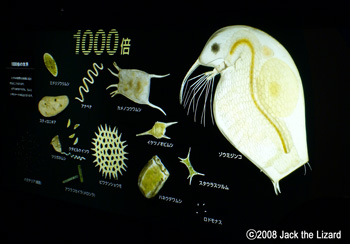
Plankton supports a lot of lives in water. When you take a look at lakes, liver or ocean, plankton is too tiny for our naked eyes. If you get interested in the micro world, you would find that there is a huge wonder world.
The planktons in the illustrations are depicted to show you the detail and not in the right size or ratio.
(December 12, 2007)
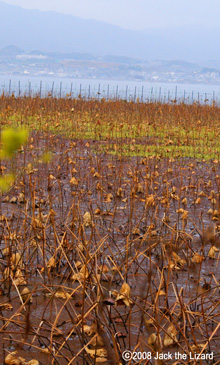
Lake Biwa is located at the centre of the main island, Honshu, in Japan. The biggest freshwater lake in Japan has unique biological environment. Some species are indigenous to Lake Biwa.
Lake Biwa Museum is located on the Karasumaru Peninsula, which is at the southeast edge of the Lake Biwa. The museum has three galleries and an aquarium. Through the three galleries, the visitors can experience the history of Lake Biwa from the ancient era, which is about 4 million years ago, to the present time. At the aquarium, you can see many rare freshwater fish and bugs living in Lake Biwa.
Why is the fossil of elephant here?
Lake Biwa is moving.
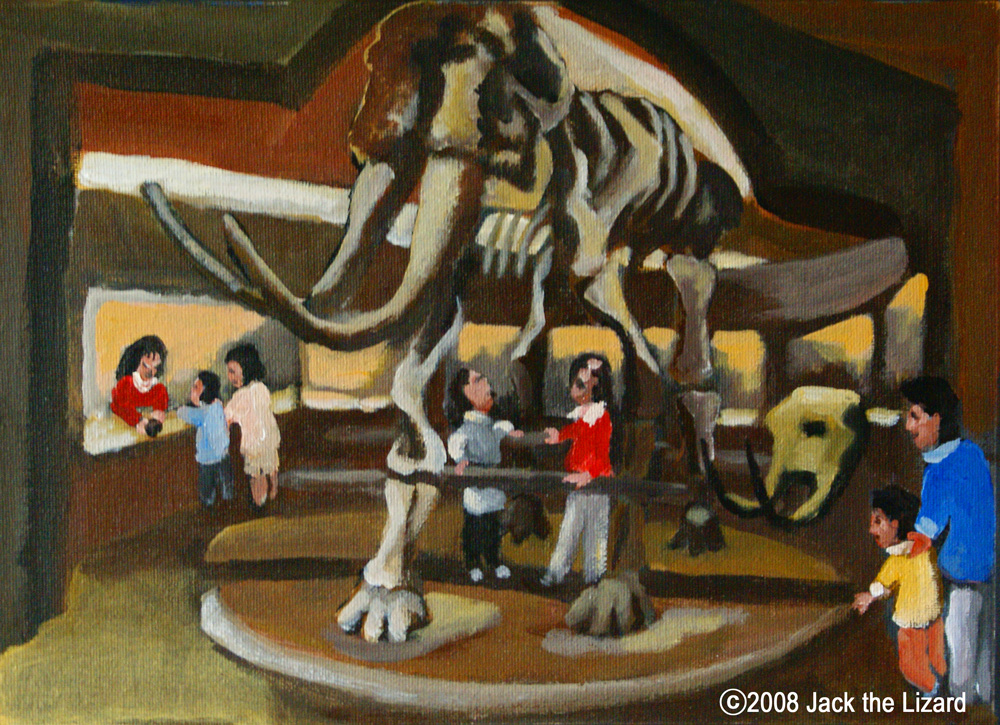
|
4 million years ago, Lake Ohyamada was formed at the area currently Ueno valley in Mie Prefecture. The Lake Ohyamada, also called Old Lake Biwa, gradually moved to north, and reached to the current location 400 thousand years ago. Believe or not, the lake is still moving to north. Probably it will reach to the Japan Sea in the future. Gallery A shows geological history. You see the gigantic elephant fossil at the centre of the hall. The fossil is big enough for visitors to walk under its belly. This is the Yellow River Elephant's fossil found in China. It is said that the Yellow River Elephant had been small sized and become the ancestor of the Akebono Elephant, Stegondon aurorae. The Akebono Elephant lived in Japan between 2.5 to 1 million years ago. Its fossil has been found from the Lake Biwa area. The gallery exhibits other fossils from the era of Old Biwa Lake such as fish, shells and plants. You are allowed to touch the fossils of dinosaur's droppings, shark’s teeth, and more. "Wow, it stinks!!" Some kids blows ups his imagination from the dinosaurs' droppings. According to a guide, many children get surprised by the sharp shark's teeth. |
Tiny Endangered Species
|
Biwatsubokamuri, Difflugia biwae, is a very rare plankton. Despite the lake water is cleaner now than it was in 1980s, the plankton has not seen since 1981. Nobody knows why it disappeared. In the Gallery C, you can see planktons through a microscope. The fresh plankton is collected from the lake every morning, so you can see it moving actively. Here is an interesting display about dobu. Dobu is swampy place that looks muddy and dirty, but actually full of small lives, plants and algae. The display of enlarged models shows you the eco system of the micro world in dobu liver. There are crayfish, water boatmans and their food such as grain of rice from through drain. Mr. Yasushi Kusuoka, the Senior Research Scientist, made this display. He says, "Sometimes the ideal environment for a living thing is dirty smelly place for human. Each live has its own suitable condition to live and it's different from others. That is one of the themes that the museum wants the visitors to think about. The display here encourages the visitors to aware what the good environment really is more carefully." |
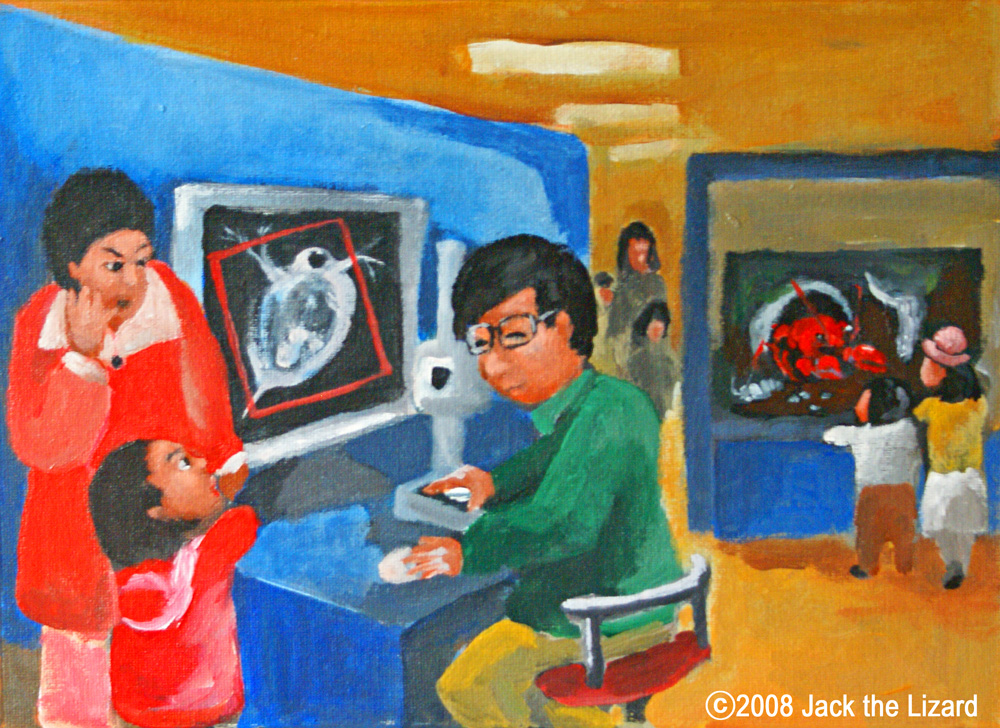
|
Big catfish look like sumo wrestlers.
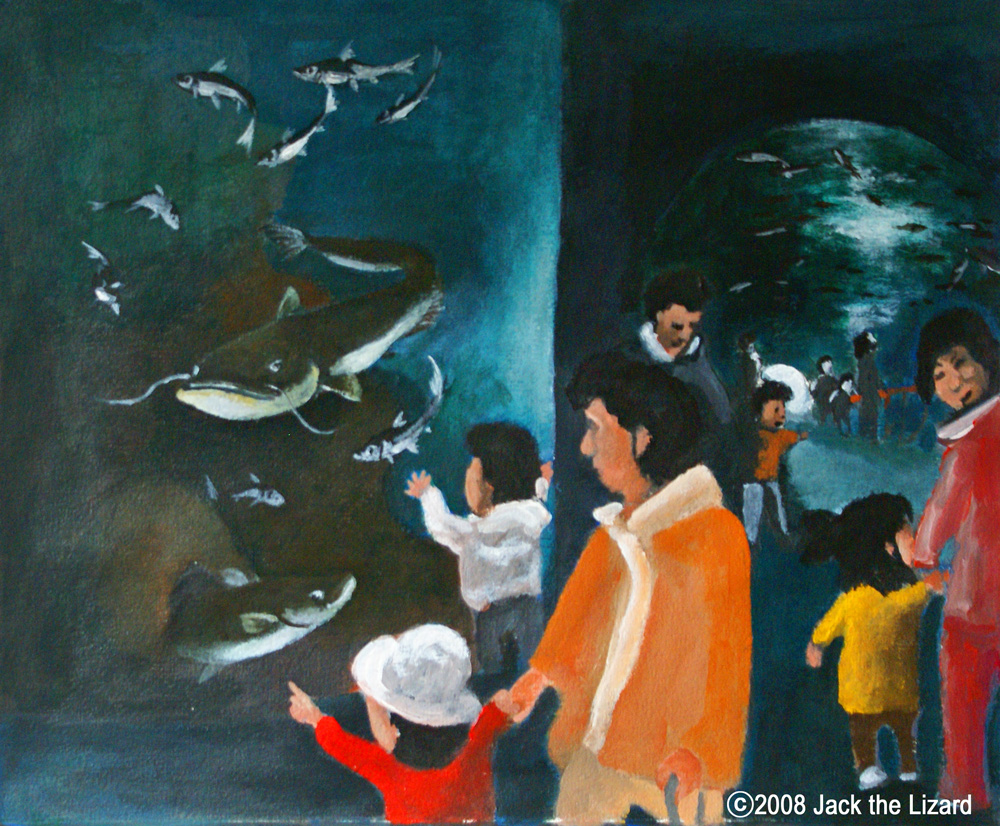
|
The must see featured fish is the Lake Biwa Catfish. Take a closer look! The huge catfish dwell in the dome tank will amaze you. Two of these catfish are very territorial and wrestle with each other sometimes. Another interesting fish is ginbuna, gibelio, a kind of carassius. The female fish can produce their offspring without a male. Gigi the catfish is also unique. She makes noise sound like "gi. gi. gi. gi. gi……" |
Don't be afraid. Hold the crayfish on your hand.
|
Ms. Mako Kondo is a guide attending at "Touching Pool". She observes many children reacting differently from the slimy Nigoro-Carassius. Some kids are afraid of the big nails of crayfish. When she finds kids with full of curiosity, she put a crayfish on their hands. That must be an exciting experience for children. "It is my pleasure to support children to feel and touch the little wild creatures", she says. |
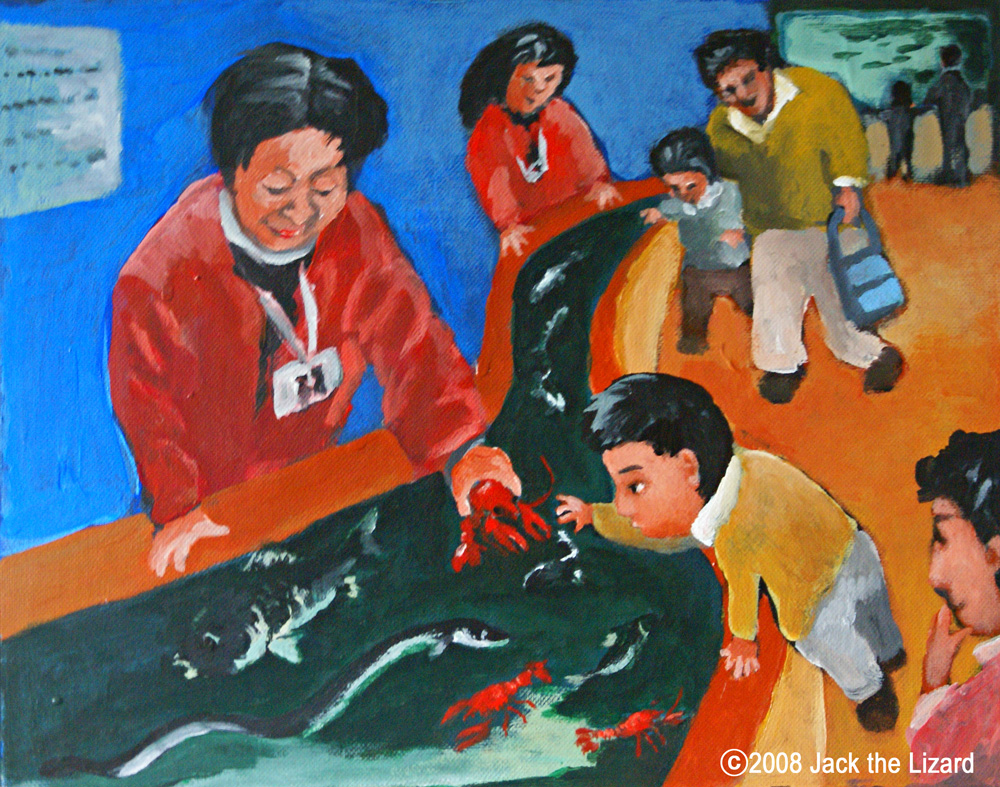
|
Are you loosing weight?
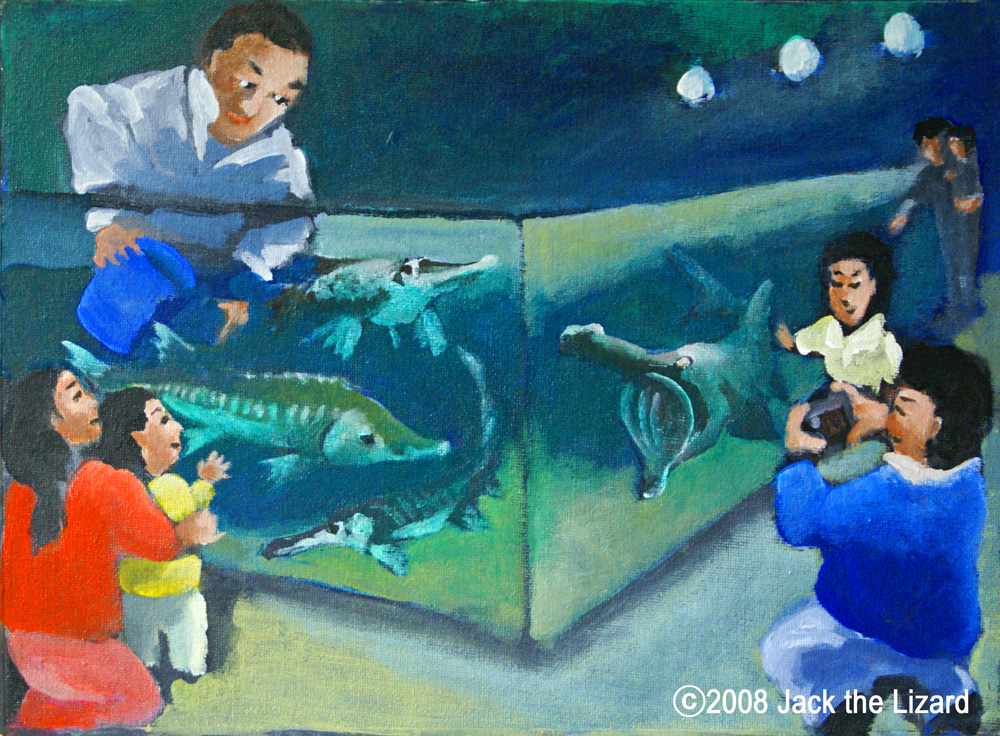
|
The American Paddlefish and the Garpike have been existed since ancient era. The fish keeper Mr. Takashi Okada feeds these living fossils here. They eat powdered food in the aquarium. "They are so sensitive. Sometimes I notice that some of them loose their weight and hard to tell why," says Mr. Okada. The American Paddlefish opens his big mouth to eat plankton in the wild. The Sturgeon has its mouth at the bottom of his face and eat clams and warms by digging up mud. Let's observe the different shapes and behaviours of fish. |
Lake Biwa for the local people
|
You'll learn the local people's culture and history by the lake. The traditional cargo boats and houses are on display. |
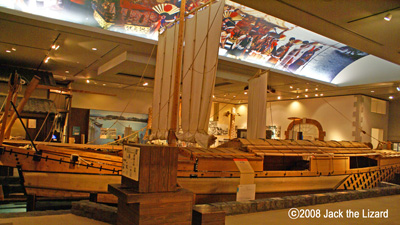
|
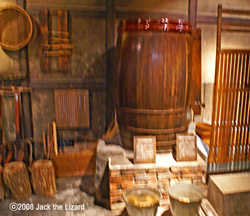
Barrel Bath
Wooden Barrel Bath looks like a historical item, but it is still used by a local family.
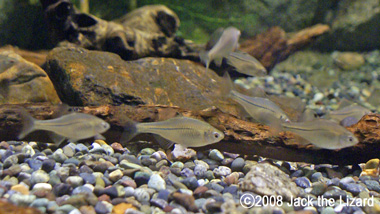
|
"All species are interdependent".Lake Biwa has about 50 different kinds of fish and 15 of them are the indigenous. The population is decreasing because of alien fish such as the Blue Gill and the Black Bass. Global warming is considered as another reason. The museum research team studies about endangered species at the conservation centre. |
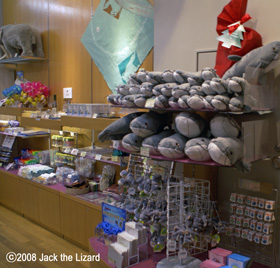
Let's ask!
In the museum, there are several field of the researchers such as ecologist, biologist, physicist, and so on. Those researchers give some lectures to visitors. Not only that, there are some guides working to show you more about display and answer your questions in the museum.
